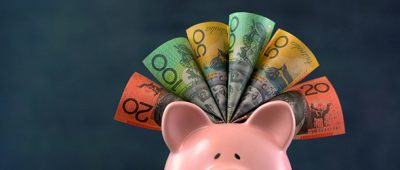As part of the process of formulating and regularly reviewing the SMSF investment strategy, there is a requirement to consider diversification. Most take this obligation seriously, but ATO data suggests many could invest in a wider variety of assets.
On average, SMSFs with balances between $200,000 and $10 million hold almost 23 per cent of their capital in cash and term deposits, and almost 28 per cent in listed Australian shares, ATO figures show.
In addition, the regulator’s data also indicates other major asset classes are largely ignored. For example, debt securities, including bonds and hybrids, account for less than 2 per cent of SMSF asset holdings and a similarly small proportion is invested in global shares.
SMSFs need to spread their capital across a range of investment types to reduce the risk of being exposed to one or a small number of poorly performing investments, Perks Private Wealth director Simon Wotherspoon says.
“If your self-managed super was invested in just one asset and that asset ran into financial trouble, all of your super would be impacted. However, if you spread – or diversify – your investments over a number of assets or investments, then you can reduce this individual investment risk,” Wotherspoon explains.
The process of diversification might involve spreading investments across various asset classes, including shares, property, fixed interest and cash. It could also mean investing across market sectors, or different styles of fund managers, such as value, growth and absolute return.
No one can predict future returns. The best-performing asset in one year might lose money in the next.
For example, commodities have been the top-performing asset class in 2021 with a return of 22.6 per cent, according to figures from BlackRock. But annualised over 10 years, commodities have returned -4.6 per cent and ranked as the worst performer in four of those 10 years.
Commodities are known for their boom-bust cycles, but even asset classes considered to be more stable deliver varying returns from year to year.
Australian government bonds, included in the stable investments category, are expected to deliver an average annualised return of 1.2 per cent over five years, according to BlackRock Investment Institute’s Capital Markets Assumptions for May 2021. However, the assumptions forecast those figures could range from a gain of 3.2 per cent to a loss of 0.8 per cent.
Diversification relies on the assets included in a portfolio responding differently to market forces. The relationship between the returns delivered by one asset and another is known as their correlation.
“Traditionally, bonds have been viewed as a defensive asset that are uncorrelated with growth assets. However, in more recent times, as interest rates have reached record lows, bonds have proved to be more correlated with equities over short periods,” Wotherspoon points out.
Cash and term deposits have also been used in the past to stabilise portfolio returns, but with interest rates close to zero, these assets can do little to compensate for losses in other asset classes.
SMSFs looking for assets that are uncorrelated with equity markets could consider investments such as life settlement funds, which invest in United States life insurance policies, or unlisted infrastructure funds that invest in energy assets or toll roads, for example.
When examining portfolio construction, the most important consideration for Wotherspoon and his colleagues at Perks is helping clients to achieve their short, medium and long-term investment goals. They do this by focusing on allocating capital to various asset classes in proportions they expect will achieve the returns the client needs, with an acceptable level of risk.
“Establishing a long-term, or strategic, asset allocation may be your most important investment decision. It will determine most of your portfolio’s risk and most of your portfolio’s return,” Wotherspoon notes.
Defensive investments are used to provide certainty in the short and medium term that money will be available when it’s needed to pay pensions and fund expenses.
To achieve long-term goals, the team aims to strike a balance between growth assets that will generate required returns and defensive investments that will limit losses in down markets, providing peace of mind for their clients.
“For a long-term investor, the worst thing they could do is panic and sell growth assets at the bottom of a bear market,” Wotherspoon warns.
“Holding a suitable amount in cash and fixed interest means the overall portfolio can hold up better than equity markets in difficult times. This might allow the investor to sleep at night and provide the patience to allow the growth assets to eventually recover.”






